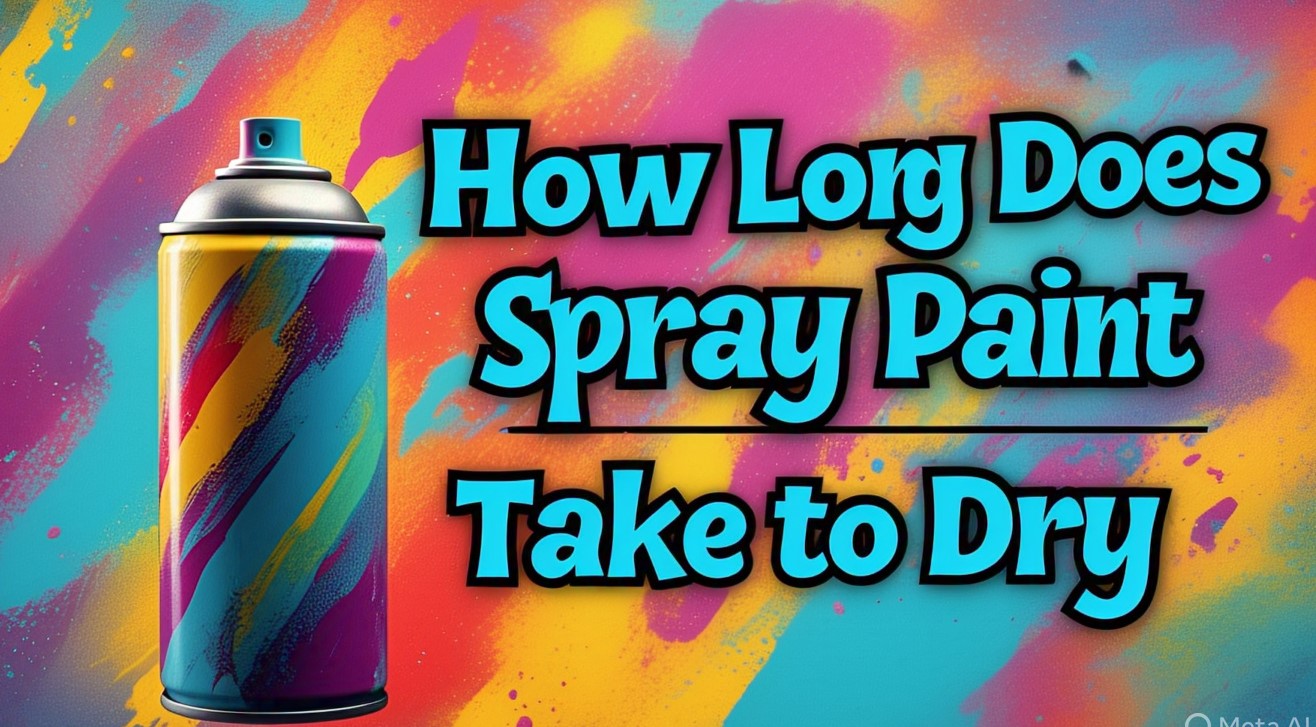Discover how long does spray paint take to dry on various surfaces and tips to speed up the process. Spray painting is a quick and efficient way to refresh surfaces, but understanding the drying time is crucial for achieving a flawless finish
Ever found yourself tapping your fingers, waiting for that freshly spray-painted piece to dry? Whether you’re revamping furniture or adding flair to a DIY project, understanding spray paint drying times is crucial. Let’s dive into the nitty-gritty of spray paint drying, ensuring your projects turn out just as you envisioned.
Table of Contents
Understanding Spray Paint Drying Stages
Spray paint drying isn’t a one-step process. It involves several stages:
1. Surface Dry
This is when the top layer feels dry to the touch. However, applying pressure can still leave marks.
2. Touch Dry
At this stage, you can lightly touch the surface without leaving fingerprints, but it’s not ready for handling.
3. Hard Dry
The paint has hardened enough to handle without damage, but it’s not fully cured.
4. Fully Cured
The paint has reached its maximum hardness and durability, making it safe for regular use.
Factors Influencing Drying Time
Several elements can affect how quickly your spray paint dries:
1. Type of Paint
Different paints have varying drying times:
- Acrylic Paint: Dries to the touch in 1-2 hours.
- Oil-Based Paint: Can take up to 8 hours to dry.
- Lacquer Paint: Dries quickly, often within 15 minutes.
- Epoxy Paint: Dries in about 30 minutes to 1 hour. (The Spruce)
2. Surface Material
The material you’re painting plays a role:
- Wood: Porous surfaces like wood can absorb paint, leading to longer drying times.
- Metal: Non-porous and often dries faster.
- Plastic: Requires special primers and can have varied drying times. (Bob Vila, The Spruce)
3. Environmental Conditions
- Temperature: Ideal temperatures range between 65°F and 85°F (18°C to 29°C).
- Humidity: High humidity can slow down drying. Aim for 40-50% humidity.
- Airflow: Good ventilation speeds up drying. (The Spruce, Fomin Soap)
Read Also: How to Get Rid of Static in Clothes
Read Also: How to Fill Out a w4 For Dummies
Read Also: How to Get Ordained Online
Read Also: How to Get Ordained in Texas
How Long Does Spray Paint Take to Dry in Different Time
How Long Does Spray Paint Take to Dry on Wood?
Spray paint on wood typically takes about 1 to 2 hours to become dry to the touch. However, for the paint to fully cure and harden, it can take up to 24 hours. (jamestdavis.com)
2. How Long Does Spray Paint Take to Dry on Metal?
Metal surfaces can dry to the touch in as little as 10 minutes, but full curing might take up to 24 hours. (The Spruce)
3. How Long Does Spray Paint Take to Dry on Plastic?
Plastic can be tricky. Using a primer is essential, and drying times can range from 30 minutes to several hours, depending on the paint and conditions.
4. How long does it take for spray paint to dry
Factors Influencing Spray Paint Drying Time. (thumbtack.com)
Tips to Speed Up Drying
Want to accelerate the drying process? Here are some handy tips:
- Apply Thin Coats: Multiple thin layers dry faster than one thick coat.
- Improve Air Circulation: Use fans or open windows to enhance airflow.
- Control Humidity: Use a dehumidifier in damp environments.
- Use Heat: A heat gun or hairdryer can speed up drying, but use cautiously to avoid bubbling. (Fomin Soap)
Common Mistakes to Avoid
- Overapplying Paint: Thick layers can lead to drips and extended drying times.
- Ignoring Environmental Factors: Painting in high humidity or low temperatures can hinder drying.
- Skipping Primer: Especially on surfaces like plastic, not using a primer can affect adhesion and drying. (The Spruce)
FAQs
1. Can I speed up spray paint drying with a hairdryer?
Yes, using a hairdryer on a low heat setting can help, but keep it at a safe distance to prevent bubbling. (Bob Vila)
2. How long should I wait between coats?
It’s best to wait about 15-30 minutes between coats, depending on the paint and conditions. (Fomin Soap)
3. Does humidity affect drying time?
Absolutely. High humidity can slow down the drying process. Aim for 40-50% humidity.
4. Why is my spray paint sticky after hours?
This could be due to thick application, high humidity, or low temperatures. Ensure optimal conditions and apply thin coats.
5. Is it necessary to use a primer on all surfaces?
While not always mandatory, using a primer ensures better adhesion and can improve drying times, especially on challenging surfaces like plastic. (Fomin Soap)
